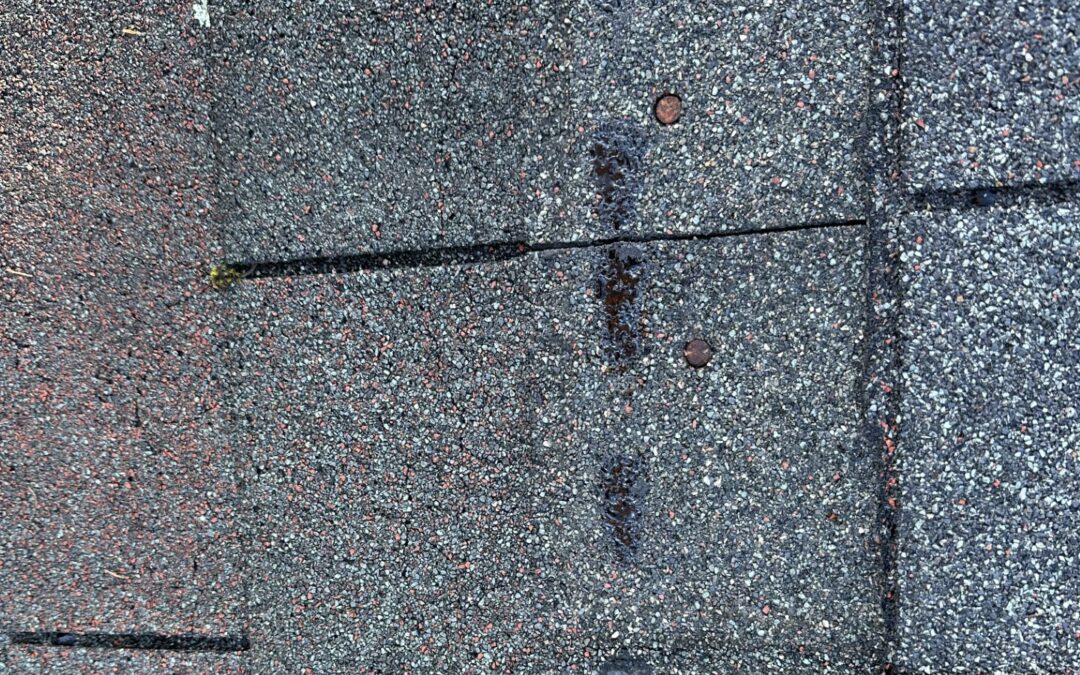A new shingled roof can develop problems for several reasons, including installation errors, material defects, and environmental factors. Below are some of the most common causes:
1. Poor Installation
- Incorrect Nailing – If nails are either overdriven, underdriven, or placed incorrectly, shingles may loosen or fail prematurely. As a result, the roof’s overall integrity can be compromised.
- Improper Shingle Alignment – When shingles are misaligned, they can create gaps, leading to leaks and reduced protection. Therefore, proper alignment is crucial for ensuring optimal performance.
- Insufficient Underlayment – Skipping or improperly installing underlayment can allow water to seep through, causing leaks. Thus, it’s essential to install underlayment correctly to prevent moisture infiltration.
- Poor Flashing Installation – Flashing around chimneys, vents, and valleys must be installed properly to prevent water infiltration. Without proper flashing, these areas are vulnerable to leaks.
2. Low-Quality or Defective Materials
- Manufacturing Defects – Some shingles may have factory defects that lead to premature curling, blistering, or cracking. Consequently, these defects can shorten the roof’s lifespan.
- Inferior Shingle Quality – Using low-grade shingles often results in faster deterioration. As a result, the roof may not offer the expected protection and durability.
3. Poor Ventilation
- Trapped Moisture – Inadequate attic ventilation can lead to condensation, which promotes mold growth, rot, and the deterioration of shingles. To prevent this, proper ventilation is essential.
- Overheating – Excessive heat buildup in the attic can cause shingles to age faster and warp. Therefore, maintaining proper airflow is critical to extend the life of the roof.
4. Weather-Related Issues
- High Winds – Strong winds can lift or tear off shingles, particularly if they weren’t nailed down securely. As a result, roofs in areas with frequent storms are at higher risk of damage.
- Heavy Rain and Ice Dams – Poor drainage can cause water to seep under shingles, resulting in leaks and significant damage. Consequently, it’s vital to ensure proper drainage to avoid such issues.
- Hail Damage – Hail can crack or dent shingles, reducing their overall lifespan. If you live in a hail-prone area, it’s essential to inspect your roof after storms.
5. Premature Aging & Other Issues
- Improper Storage of Shingles Before Installation – If shingles were stored improperly, such as being exposed to moisture, they may already be compromised before installation. Therefore, proper storage is vital.
- Foot Traffic – Walking on a new roof too soon can cause damage to the shingles. To prevent this, avoid walking on the roof until it’s fully installed and secured.
- Algae or Moss Growth – In humid climates, algae and moss can grow on shingles, leading to premature deterioration. To address this, regular cleaning and maintenance are recommended.
- Structural Issues – If the roof deck is weak or uneven, shingles may not adhere properly and can become damaged more quickly. As such, it’s important to ensure a solid and level deck before installation.
If you’re experiencing any of these issues with your new shingled roof, it’s essential to consult a professional roofing company. At Ferreira Exteriors, we specialize in roof installations, repairs, and maintenance to ensure your home stays protected from the elements. Contact us today to schedule a consultation and keep your roof in top condition.


